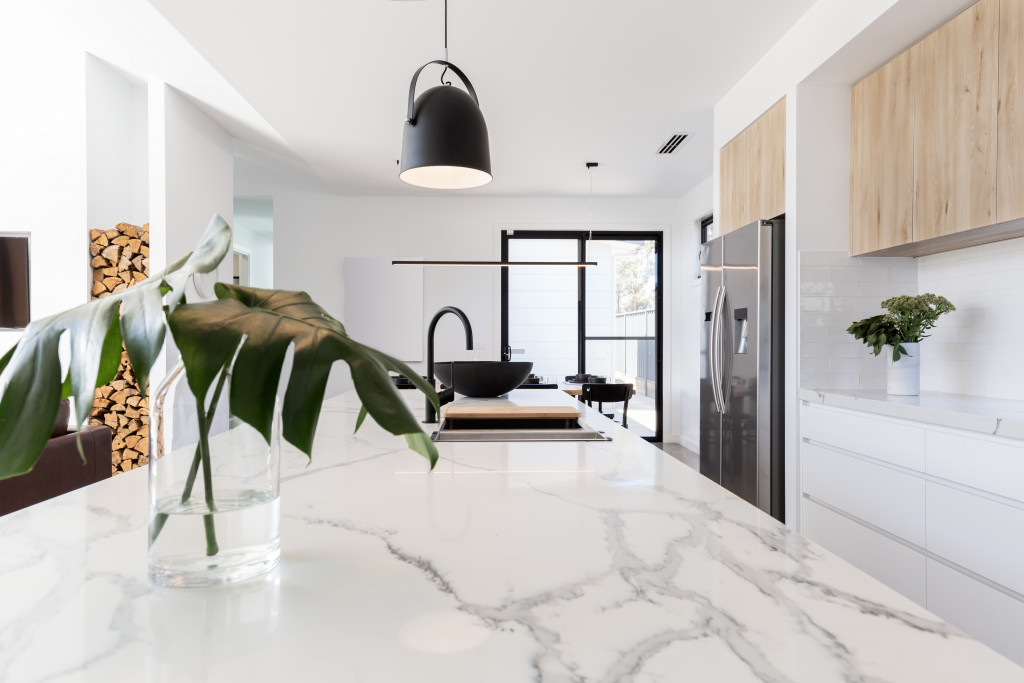Lighting significantly influences the way our home will look and feel, and one of the biggest mistakes we can make as homeowners is ignoring it completely or not having a say in how the lighting in our home will be designed. If you’re in the process of designing your dream home, one of the best things you can do for its design is to mix, match, and therefore layer your lighting sources because it will add dimension, depth, and character to your rooms.
However, there’s no denying that choosing various light fixtures for a space can be daunting, especially if your common areas are blended in an open concept. But when done right, layered lighting can add so much character to your home. There is an art and science to choosing various light fixtures that look good together, and here are some essential tips for effectively and safely mixing different types of lighting sources for your home.
Prioritize electrical safety
However, before you even begin the process of choosing stylish light fixtures for your home, you need to ensure that your house’s electrical safety is up to scratch. Residential electrical fires are responsible for an estimated 51,000 fires annually, and as homeowners, the onus is upon us to ensure that our lighting choices do not contribute to this risk.
Consult with a reliable residential electrician to ensure that your home can handle multiple lighting sources at once, especially if the property is on the older side. Consider having the entire property re-wired if it has not gone through that process in decades, or at the minimum, make sure it’s equipped to handle the surge of electricity that it might experience with having multiple sources of light at the same time.
Find a common denominator
To give your spaces a cohesive look despite having multiple lighting sources, you need to find one common thread or one common denominator that you want all your light fixtures to have. But at the same time, having all your fixtures be 100 percent the same can make the space feel a bit too basic or cookie-cutter. What you want is a balance between cohesion and variety—which means finding fixtures that look like they could come from the same collection or line but are not necessarily fully similar.
A common denominator or thread can be a shape, color, style, or finish—any element that ties your fixtures together, even if they’re not completely the same. Look for one thing that’s similar between the fixtures and ensure that every piece has that one thing in common.

Monitor the scale of the fixtures
One of the most important things you need to note is how each piece’s scale will affect or play off the other within every room. For example, if you choose a large accent light fixture as the focal point in your room, you need to ensure that the rest of your fixtures don’t steal focus from that big statement piece.
Don’t just mindlessly choose pieces because every single one of them looks good; remember to consider how each light fixture will play off against each other in a room, especially if your house already makes space for a lot of natural light to come through.
Add dimension by using layers
If there are areas in your living room, for example, that you want to highlight, don’t hesitate to use other types of light fixtures to add dimension and drama. You can consider using sconces, picture lights, and ceiling and floor lamps to illuminate corners and vignettes in your space that you want to bring attention to. Adding various light fixtures will allow you to incorporate more tones, styles, and textures into your furnishings.
Experiment with different contrasts
The problem with too many rules is that it boxes us and causes us to stay safe. But when it comes to mixing and matching light fixtures, there are still plenty of ways to do it right without losing the fun in the process.
Consider how you can play with shapes, styles, and finishes not just with your light fixtures but also with your furniture and smaller design elements. Look for various pieces that look good in your eyes, and prepare a vision board so that you can envision how they will look side by side. Don’t be afraid to explore.
Your home’s lighting can make or break not just how your home looks but also your productivity and rest. So pay attention to it and choose well, and use lighting as a tool to improve your interiors.

